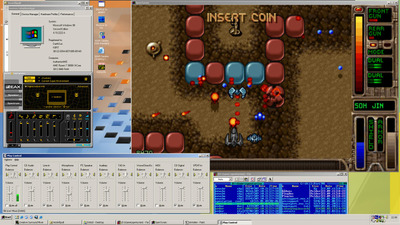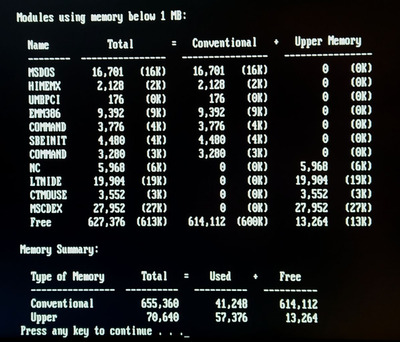Shponglefan wrote on 2024-05-10, 22:26:
On a related note, I never intended for this thread to be a debate about whether the Pentium 4 is consider retro.
Rather, it was a question whether the Pentium 4 is underrated when used for retro computing. IOW, using it for software and games from the 80s and 90s.
Whether or not a platform is considered retro is different from what one uses it for.
I would say the Pentium 4 is slightly underrated, particularly considering the legacy of hate for the P4 which is probably no longer fully deserved. As some others have mentioned, I think the P4 isn't really ideal for most use cases... but it is "fine" for a great many use cases. Being fine for a wide variety of things can be very very useful! There are a lot of people who owned a P4 back in the day and have nostalgia for it, and I think it can be a great choice for a retro computer. Even in cases where the P4 is not objectively better than an alternative, it could still be a fair subjective preference for certain users.
Pros:
Pentium 4 systems (particularly with Intel motherboard chipsets) tend to have relatively good compatibility with other hardware & software, good stability, good drivers
P4 uses ATX power supplies using the 12V connector, and are thus easy to power using modern power supplies
Early P4's are fine for Windows 9x... but probably not better than PIII, Athlon, or early Athlon 64
Late P4's are fine for Windows XP... but probably not better than Athlon 64, Core 2, Phenom, etc
Cons for DOS:
Most P4 motherboards don't have ISA slots which isn't ideal for sound
P4 is getting pretty far from period correct for pure DOS... Is fiddling with a P4 to run Pure DOS better than running DOS games in DOSBox? Personal preference there...
Cons versus Core 2 Duo:
Using a Pentium 4 for Windows XP is a bit of a hard sell compared to Core 2 Duo or maybe something even faster
Pentium 4 systems are not really much cheaper than Core 2 Duo/Quad... they're both almost free these days
Cons specifically versus early Athlon 64 (s754/939):
P4 generates more heat than a similar performing Athlon 64, and generally slower
Socket 478 3rd party coolers are harder to find and usually less effective than what's available for AMD s754/939/AM2/AM3/AM4 which incredibly all use the same clip
Most P4 systems don't support x64 which limits options for dual booting with modern OS (not a huge deal)


